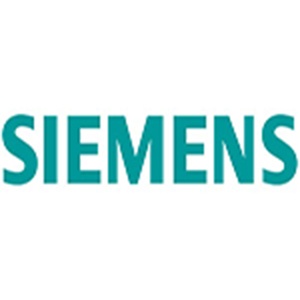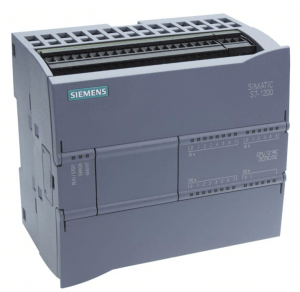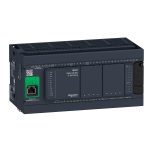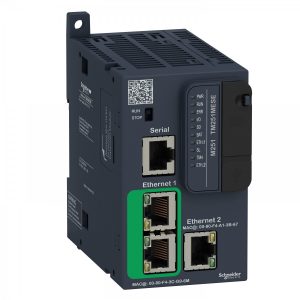Today we want to bring you the second part of our comparison between SIEMENS and Schneider Electric (SIEMENS vs Schneider Electric! Easy choice?). We recommend that, if you have not seen it yet, you consult it before reading this so that you can get into the subject from the beginning.
Before we begin, we would like to emphasize that our content is purely informative, based on our own experiences and professional development. We do not receive financial or other benefits from any manufacturer or supplier to give positive or negative criteria. At no point do we try to demean any specific brand as both are great overall.
With that said, let’s recap a bit.
We noted in the previous article that Schneider Electric had markedly higher quality electrical protection devices at a considerably lower price than those offered by SIEMENS today. With this, we just want to emphasize that, for the moment, for the electrical instrumentation of our project, even if it is only about assembling a panel with electrical protections, without a doubt our recommendation is the French colossus.
Now we continue with the highlight of this second article, where we will expose one of the fundamental aspects of our comparison, the PLC.
Without further ado, we begin!
Exposing more data…
In order to maintain uniformity in the treatment of the subject, we will maintain the same structure that we developed in the previous article regarding the distribution of the tables and the parallel established between both manufacturers.
Well, yes, we reached the first inflection point of our comparison, which we know will generate different opinions. If you don’t know what we are talking about or would like to get closer to all the basics related to PLCs, we invite you to read our article on the subject.
We have to point out that making a comparison between all the CPUs (Central Processing Unit) of each PLC model is not feasible. This is because its use depends fundamentally on the application for which it is required and there are many CPU versions that exist for each model. Due to this, we will focus on exposing the specific characteristics and requirements of the PLC models with a specific CPU of the industrial range; Thanks to this, the reader will be able to define the most recommended options for their needs.
Let us know in the comments if you would like to see another article in the future dedicated to the range for buildings and Homes of these manufacturers.
Next, we will show a parallel between the simplest programmable logic devices: the LOGO and Zelio Programmable Logic Relays, manufactured by the companies that are the object of our attention.
|
Source: Images and data taken from the catalogs of both manufacturers.
|
 |
 |
||||
| Programmable Logic Relay |
|
|
In this table we observe a marked difference in favor of SIEMENS, appreciable in the fact that in the German teams we can find numerous performances in contrast to their French counterparts. This, added to their lower cost, tips the balance on this side.
Before selecting a PLC is necessary to have clear some essential features such as software, the kind of programming language we will use and the amount of signals that we will use to make the correct sizing of the input-output and communications modules.
Next, we will first show the SIEMENS PLC models in ascending order based on power and manufacturing objective. In order of manufacture, we would begin with the S7-200, but as it is already a discontinued product, we will start with the 1200, which corresponds to its upgrade.
| Source: Images and data taken from the SIEMENS catalogs. |  |
Specifications |
||
|
SIMATIC S7-1200 Basic Controller |
|
Programming package: STEP 7 V14 o superior
Supply voltage: 120 VAC o 230 VAC
Work memory: 50 kbyte
Load memory: 1 Mbyte(integrada) ampliable con SIMATIC Memory Card.
CPU run times: 0.08µs to 2.3µs (depending on the type of operation)
Digital inputs: 6(3 usable for High Speed Counting)
Digital outputs: 4-Relay
Analog inputs: 2
Analog outputs: 0
Number of Ports: 1x PROFINET / Ethernet
Interface: X1: RJ45 / PROFINET
Communication protocol: TCP/IP, PROFINET IO-Controller, PROFINET IO-Device, SIMATIC Communication.
Web Server: Yes
Ambient conditions: 0°C to 60°C
Supported Languages: KOP, FUP, SCL.
Price: 147.00 – 216.64 euros
|
||
| Conclusion | It is a compact PLC designed for simple production activities, but with high precision. It consists of 5 CPU models that allow to convert the scalable productive tasks in dependence of the needs of each process. | |||
| SIMATIC S7-300 Advanced Controller |
|
Programming package: STEP 7 V5.5 or higher + SP1 or STEP 7 V5.2 and higher + SP1 with HSP 218.
Supply voltage: 24 VDC
Work memory: 128 Kbyte (Non-expandable)
Load memory: 8 Mbyte (MMC)
CPU run times: 0.1µs a 1.1µs (depending on the type of operation)
Interface: RS485
Communication protocol: MPI
Web Server: No
Ambient conditions: 0°C to 60°C
Supported Languages: KOP, FUO, AWL, SCL, CFC, GRAPH, HiGRAPH.
Price: 520.00 – 801.21 euros
|
||
| Conclusion | This PLC not only stands out for offering solutions to the low and medium ranges, but it is considered one of the most versatile options on the market, since it constantly renews its CPUs. It is mainly used in construction processes and serial machines. Production lines in the food industry, packaging, among others. In principle they will be removed from manufacture in 2023 for commercialization, remaining only as spare parts. | |||
| SIMATIC S7-400 Advanced Controller |
|
Programming package: STEP 7 V5.5 or higher with HSP 262.
Supply voltage: 24 VDC
Work memory: 1 Mbyte
Load memory: 512 Kbyte
CPU run times: 31.25 ns to 62.5ns (depending on the type of operation)
Number of Ports:
Interface:
Web Server: Yes
Ambient conditions: 0°C a 60°C
Price: 2829.98 – 3831.26 euros
|
||
| Conclusion | PLC ideal for manufacturing processes, supporting tasks with high data traffic thanks to its high speed BUS. It is one of the most powerful and high performance PLCs for complex production processes, automotive industry, petrochemicals, steel industry and even building automation. One of its most important functions is the possibility of expansion thanks to its modular system. | |||
| SIMATIC S7-1500 Advanced Controller |
|
Programming package: TIA PORTAL STEP 7 Professional V13 SP1 update 4 or higher.
Supply voltage: 24 VDC
Work memory: 5 Mbyte
Load memory: 32 Gbyte (Only with memory card)
CPU run times: 10 ns a 64 ns (depending on the type of operation)
Number of Ports:
Communication protocol: IPv4, PROFINET IO-Controller, PROFINET IO-Device, SIMATIC Communication , PROFIBUS DP.
Web Server: Yes
Ambient conditions: 0°C to 60°C
Supported Languages: LAD, FBD, STL, SCL, GRAPH
Price: 2528.86 – 3337.85 euros
|
||
| Conclusion | It is a very easy to use PLC, which is ideal both for simple and small machines and for highly complex processes, where data processing and communication between teams are the main objective, thanks to its ability to process signals at high speed. | |||
As you can see in the table above, we have made a breakdown of the main characteristics and operating objective of each of the industrial models of the manufacturer SIEMENS.
We have to take into account that for the creation of our project it is necessary, in addition to the PLC, to have power supplies, connection modules, input-output expansion modules, among others. The selection and use of these will always depend on the specific needs of the sizing of our process.
We will then proceed to perform the same procedure of comparison with Schneider Electric equipment.
| Source: Images and data taken from the Schneider Electric catalogs. |  |
Specifications |
||
|
MODICON M221 Logic Controller |
|
Programming package: MachineStruxure, SoMachine Basic
Supply voltage: 100 VAC or 240 VAC
Work memory: 64 Mbyte
Load memory: 128 Mbyte(integrated) Expandable to 2 GB with SD card.
CPU run times: 5µs to 10ms (depending on the type of operation)
Digital inputs: 24
Digital outputs: 16-Relay
Analog inputs: 2 (0-10V)
Analog outputs: 0
Number of Ports:1x USB 2.0 mini port, 1x Ethernet RJ45, 1x Serial Port RJ45
Interface:1x Serial Port: RS232/RS485
Communication protocol: TCP/IP, Modbus RTU, SoMachine Network, USB, Ethernet.
Web Server: Yes
Ambient conditions: -10°C to 55°C
Supported Languages: IL, LD, SFC, ST, FBD.
Price: 319.19 euros
|
||
| Conclusion | It is a compact PLC designed for simple productive activities, such as textile machines, automatic washing machines, billboards, access control systems, swimming pools, among others. It is a MachineStruxure controller, which is an intuitive solution for machine automation with the aim of achieving better results. | |||
|
MODICON M241 Logic Controller
|
|
Programming package: MachineStruxure, SoMachine Basic
Supply voltage: 100 VAC or 240 VAC
Work memory: 64 Mbyte
Load memory: 128 Mbyte(integrated) Expandable to 2 GB with SD card.
CPU run times: 5µs to 10ms (depending on the type of operation)
Digital inputs: 24
Digital outputs: 16-Relay
Analog inputs: 0
Analog outputs: 0
Number of Ports: 1x USB 2.0 mini port, 1x Ethernet RJ45, 1x Serial Port RJ45
Interface:
Communication protocol: Ethernet/IP, Modbus TCP, SoMachine Network, USB.
Web Server: Yes
Ambient conditions: -10°C to 55°C
Supported Languages: IL, LD, SFC, ST, FBD.
Price: 408.36 euros
|
||
| Conclusion | This model of controller offers advanced functions and communications. They integrate an Ethernet port that offers FTP, web server and SQL services. This gives you extensive integration with control systems for monitoring and maintenance through smartphone and PC applications. | |||
| MODICON M251 Logic Controller |
|
Programming package: MachineStruxure, SoMachine Basic
Supply voltage: 100 VAC or 240 VAC
Work memory: 64 Mbyte
Load memory: 128 Mbyte(integrated) Expandable to 2 GB with SD card.
CPU run times: 0.3ms to 0.7ms (depending on the type of operation)
Number of Ports: 1x USB 2.0 mini, 1x Serial RJ45, 1x Dual Ethernet 1 RJ45, 1x Ethernet 2 RJ45.
Interface:
Communication protocol: Ethernet/IP, Modbus TCP, CANopen, USB.
Web Server: Yes
Condiciones ambientales: -10°C to 55°C
Supported Languages: IL, LD, SFC, ST, FBD.
Price: 324.35 euros
|
||
| Conclusion | This range of controllers offers an innovative high performance solution in the field of modular machines and distributed architectures. The size of the cabinets is greatly optimized, thanks to their compact dimension. As there are no integrated I/Os, communication with field devices is via machine buses or Ethernet. | |||
As you can see in the table above, Schneider Electric’s offer corresponds to equipment with a very similar price among its devices. These PLCs are mainly oriented to basic and medium industrial processes, without having a large deployment in complex production processes. All this means that the balance is still favored by the German manufacturer, but does not mean that for small and simple applications, with a low budget limit Schneider may not be the solution. But this will always be a matter for the designer to consider.
In the next article, we will see what each manufacturer and their respective programmers have to offer in terms of HMI proposals.
We hope that you liked this second part and that you leave us your opinions in the comments and social media.













